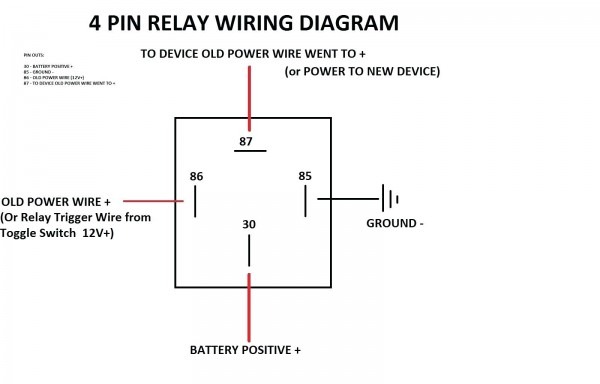

Such conditions may cause the sealing to be breached. Ultrasonic cleaning is not allowed, and aggressive solvents must be avoided.Īfter soldering and before starting any cleaning process, cooling of the PCB assembly must take place to reduce thermal stress and avoid pressure difference between the relay interior and its surroundings. Please note: Finder relays are not suitable for infra red or vapour phase reflow processes or similar. Ensure the solder temperature and time are kept to 260 ☌ (500 ☏) and 5 seconds maximum.
#COMMON PIN RELAY PC#
Set the height of the molten solder wave such that the PC board is not flooded with solder. Set the preheat time and heat to just achieve the effective evaporation of the flux, taking care not to exceed a component side temperature of 120 ☌ (248 ☏). This is NOT a sealed or hermetically sealed relay. The relay is sufficiently well sealed to be subjected to a short-term post soldering wash process for flux residue removal etc and is intended to be used within an automatic soldering process. These relays will not normally be vulnerable to flux ingress from automatic application. Automatic flux application is possible with care. The relay is not fully sealed but is intended to be used with in an automatic soldering process. The cropping process may cause shock to the relay’s mechanism.įinder PCB relays are usually available with 3 levels of environmental protection. CroppingĬropping of relay pins before or after soldering is not recommended. (The bending stresses will be transferred to the internal components and so affect reliability.) The use of plated through-hole PCBs give the strongest mechanical solder joint which is a significant factor with PCB mount industrial and power relays. Relay pins should NOT be bent in an attempt to secure the relay to the PCB. The PCB should have the hole sizes and spacings as stated in the Finder data sheet to avoid stress being applied to the pins on insertion. And for those relays, there is usually an equivalent PCB mounted socket that allows PCB inter-connection but with the convenience of relay replacement without a de-soldering operation. Some Finder PCB relays can also be mounted on a corresponding DIN rail socket for direct wiring. The integral Faston tab makes them particularly well suited to many domestic appliance applications.

#COMMON PIN RELAY SERIES#
Finder’s range are all ‘through hole’ and range from small, low current relays, such as Finder’s 30 Series to PCB mount versions of industrial and power relays such as Finder’s 55 and 67 Series.įinder’s 45 Series is a PCB relay with an integrated ‘250 Faston’ option. PCB relays are most commonly of ‘through hole‘ style where the relay ‘pins‘ are inserted into holes in the PCB although so-called surface mount PCB relays do exist. The PCB itself electrically interconnects multiple electronic components by providing conductive tracks, pads and other features etched from one or more layers of copper, laminated on or between, layers of a non-conductive substrate.

#COMMON PIN RELAY FULL#
A PCB relay, which may also be referred to in full as a printed circuit board relay, or in short as simply a print relay, is designed to be soldered to a printed circuit board.


 0 kommentar(er)
0 kommentar(er)
